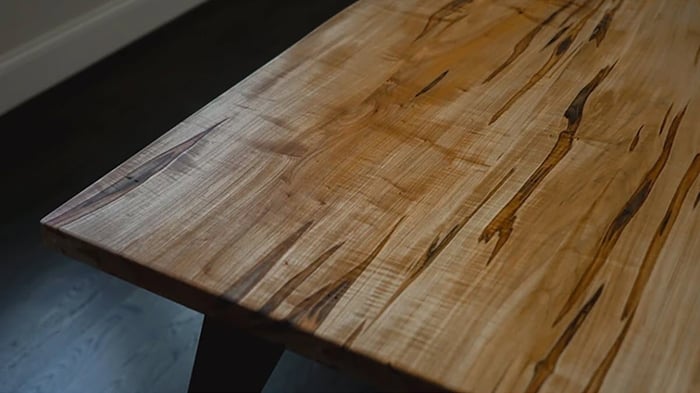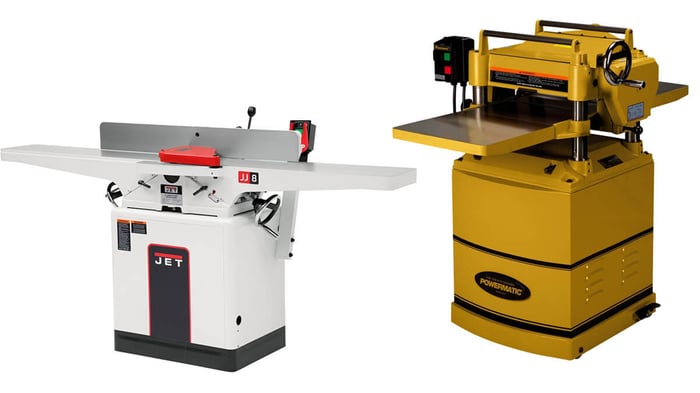
10 Essential Router Tips Every Furniture Maker Needs to Know
If you're passionate about woodworking and eager to enhance your skills, this in-depth article delves into the world of routers and their applications in furniture making. Stay tuned for our top 10 router tips!
What is a Router and How is it Used in Furniture Making?
The router, a versatile woodworking tool, is essential in furniture making as it hollows out areas in wood, carves intricate designs, cuts patterns, and shapes edges to improve both the aesthetics and functionality of furniture.
Woodworkers highly appreciate routers for their precision and effectiveness in executing detailed work. These tools are frequently used in furniture making to create decorative edges on tables, cabinets, and chairs, resulting in a refined and professional appearance.
For instance, when crafting a traditional Queen Anne dining table, a router can be utilized to add elegant fluting along the table legs, enhancing the overall design. In modern furniture design, routers play a crucial role in achieving sleek, clean lines and perfect joints in minimalist pieces such as Scandinavian-inspired shelving units.
Choosing the Right Router for Your Project
Choosing the right router for your woodworking project is crucial for achieving accuracy and efficiency in your craft. Given the range of brands that provide different routers and accessories, it is important to assess your project needs and skill level in order to make a well-informed choice.
Factors to Consider When Selecting a Router
When one is in the process of choosing a router for woodworking projects, it is important to carefully consider several key factors. These include the router's ability to control speed, the features it offers, how easy it is to set up, and the reputation of the brand. All of these elements play a significant role in enhancing the efficiency and accuracy of routing tasks.
The ability to control speed is crucial as it enables users to adjust cutting speeds according to the material being worked on, resulting in cleaner cuts. The ease of setting up the router can be a time-saving convenience during projects. Furthermore, the brand's reliability is essential for ensuring longevity and consistent performance. When selecting a router, it is advisable to look for specific features such as variable speed settings, dust collection capabilities, and an ergonomic design that allows for extended use without experiencing fatigue.
Router Safety Measures
Ensuring safety while using a router is crucial to avoid accidents and maintain a secure woodworking setting. By adhering to necessary safety precautions, acquiring appropriate safety equipment, and familiarizing oneself with beginner-friendly techniques, woodworkers can minimize risks and concentrate on honing their craft.
Important Precautions to Take
When using a router, it is important to follow essential safety measures to reduce the risk of accidents. Making sure that the router is equipped with necessary safety features and using the appropriate safety gear can greatly increase the protection of woodworkers while working with routers.
Wearing protective gear like safety goggles and ear protection is a crucial safety measure to prevent injuries from wood chips and loud noise. Keeping the router's cutting bits sharp and securely fastened can help prevent kickback and accidents. Additionally, maintaining a well-lit and clutter-free work area is recommended to ensure visibility and minimize tripping hazards. It is important to never leave a running router unattended and always unplug it when not in use for added safety precautions.
Router Techniques for Furniture Making
Proficiency in a range of router techniques is crucial for attaining precision and unleashing creativity in the realm of furniture crafting. Whether it's crafting robust wood joinery or employing router templates to bring intricate designs to life, the integration of varied routing techniques enhances the artistry and personalization of furniture creations.
Common Techniques and Tips
In the realm of furniture making, fundamental router techniques like edge joining and smooth cuts play a vital role in achieving precise and seamless woodworking outcomes. Employing specific guidelines tailored for smooth cuts and edge joining can elevate the overall quality and visual appeal of furniture projects.
A crucial aspect of this process involves understanding the proper setup and selection of router bits to ensure clean and precise cuts. The speed and feed rate of the router during passes must be carefully controlled as they significantly impact the final result. Additionally, paying close attention to the grain direction of the wood is essential to avoid tearout and achieve a polished finish.
Consistent practice of these best practices enables woodworkers to refine their routing skills and progress to a professional level in furniture making.
Creating Different Types of Joints with a Router
The use of a router in creating different types of joints is crucial in the construction of furniture pieces that are both sturdy and visually pleasing. Whether you are working on mortise and tenon joints or dovetail joints, becoming proficient in router techniques for various joint types will improve both the strength and appearance of furniture assemblies.
Step-by-Step Instructions for Common Joints
Achieving expertise in creating common joints with a router demands meticulous attention to detail and precise execution. Whether it's crafting rabbets or intricate box joints, following step-by-step instructions for these joint types elevates the structural stability and artistry of furniture pieces.
When tackling rabbets, start by adjusting the router blade to the desired depth and positioning the straight edge guide for optimal accuracy. Carefully guide the router along the workpiece's edge, maintaining a consistent pace to achieve a seamless and neat cut.
To create box joints, utilize a specialized box joint jig in conjunction with your router to ensure the precise interlocking of fingers. Invest time in correctly aligning the jig and conducting trial cuts before working on the final piece to prevent errors. Not only do these joints enhance the strength of your woodworking projects, but they also contribute to the aesthetic appeal of the finished piece.
Using Templates and Guides with a Router
Utilizing templates and guides with a router can greatly expand the design options available in furniture making. Whether used for pattern cutting or template routing, incorporating these tools into woodworking projects can improve precision, repeatability, and customization in furniture design.
How to Make and Use Templates and Guides
To effectively use templates and guides with a router, it is essential to pay close attention to detail and maintain precision. Whether you are aiming to achieve flawless chamfers or execute intricate pattern cutting, the integration of templates and guides in woodworking projects can streamline the design process and guarantee consistent outcomes.
The utilization of templates in furniture making not only enhances accuracy but also offers a range of additional benefits. Templates facilitate the replication of intricate shapes and designs, thereby saving time and effort that would otherwise be spent recreating similar pieces. By incorporating templates for routing, woodworkers can ensure uniformity across multiple pieces, resulting in a harmonious final product. Template routing simplifies the creation of custom designs and intricate details, enhancing the overall quality of the furniture being produced.
Maintaining and Cleaning Your Router
It is crucial to engage in routine maintenance and cleaning of your router to extend its longevity and maintain peak performance. By implementing dust collection systems, adhering to maintenance checklists, and establishing effective cleaning procedures, woodworkers can uphold the effectiveness and resilience of their routers.
Proper Care and Maintenance for Longevity
To keep your router in optimal condition for the long term, it is essential to follow consistent care and maintenance practices that cater to woodworking requirements. By adhering to maintenance tips, acquiring appropriate router accessories for woodworking projects, and taking a proactive approach to upkeep, woodworkers can enhance the durability and effectiveness of their routing tools.
Regularly cleaning the router's base and bits using a soft cloth and ensuring that the router is unplugged before conducting any maintenance tasks are critical measures to prevent the accumulation of dust and debris that could hinder performance. Additionally, lubricating the router's moving parts with a recommended oil or grease can help uphold smooth operation.
During router usage, it is vital to inspect the bit for any indications of wear and promptly replace it if needed to avoid causing harm to the workpiece. By integrating these care and maintenance routines into your woodworking practices, you can ensure that your router continues to operate at its best for many years to come.
Troubleshooting Common Router Issues
Encountering common router issues while working on woodworking projects can slow down progress and affect the quality of craftsmanship. By utilizing troubleshooting techniques, seeking advice from router reviews, and adopting beginner-friendly problem-solving methods, woodworkers can effectively tackle and overcome common challenges related to routers.
Tips for Dealing with Common Problems
Successfully troubleshooting common router problems requires a thoughtful and informed approach to minimize any interruptions to woodworking activities. By following maintenance recommendations, selecting reputable router brands, and practicing beginner-friendly techniques, woodworkers can effectively address and overcome a variety of technical challenges they may encounter while using routers.
Regularly cleaning the router bits and ensuring they are properly sharpened can greatly enhance their performance and prolong their lifespan. When deciding on a router brand, opting for companies known for their reliability and customer satisfaction can lead to a sound investment. Employing fundamental troubleshooting methods, such as adjusting cutting depth or speed settings, can often resolve common issues without the need for professional intervention.
Frequently Asked Questions
What are the top 10 router tips for furniture makers?
1. Use the correct bit for the job - different bits are designed for specific cuts and materials.
2. Always start with a sharp bit - dull bits can lead to uneven cuts and possible accidents.
3. Secure your workpiece - use clamps or a router table to prevent movement while cutting.
4. Practice on scrap wood first - this will help you perfect your technique and prevent mistakes on your final piece.
5. Use a guide or template - this will ensure precise and consistent cuts every time.
6. Take your time - rushing can lead to mistakes and accidents, so work at a steady pace.
7. Pay attention to grain direction - cutting against the grain can result in splintering and rough edges.
8. Use a dust collector or wear a mask - router dust can be harmful to inhale, so take precautions.
9. Adjust the depth of the cut in small increments - this will prevent overcutting and damaging your workpiece.
10. Clean and maintain your router regularly - this will ensure it is in top working condition and prolong its lifespan.





